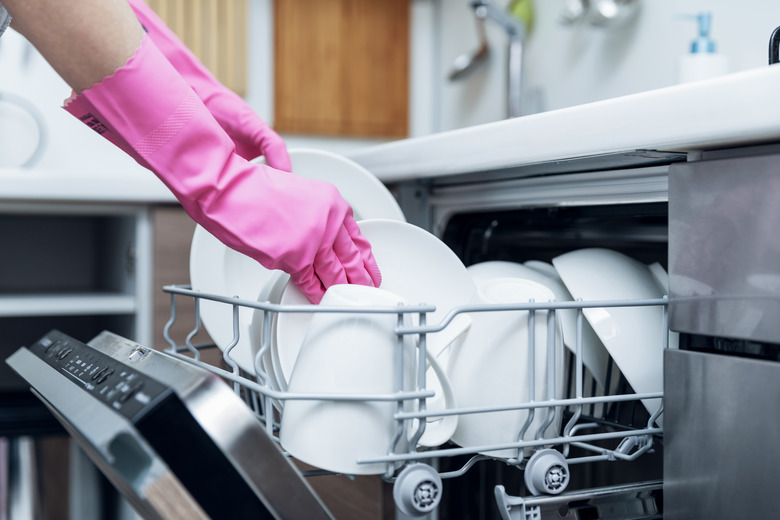How To Troubleshoot A Groaning Noise In My Dishwasher
It's the middle of the night and your sleep is interrupted by a peculiar dishwasher noise. Some noise is common when it comes to a running dishwasher, but this involuntary groaning is a lot louder than you're used to hearing. When your dishwasher starts to emit weird noises, you need to troubleshoot it.
Reasons for Dishwasher Noise
Reasons for Dishwasher Noise
One of the primary reasons why you may hear dishwasher noise is due to your dishwasher pump. According to Part Select, the purpose of the dishwasher's pump is to pressurize the spray arms. In some models, the pump can also drain water.
If you don't know where the pump is located, you'll find it at the bottom of the dishwasher in two separate compartments. One compartment is for wash or circulation, and the other is used for draining. In the circulation compartment, you'll find the wash impeller and the filter components, while in the draining compartment, you'll find a drain impeller and chopper blade.
The impellers operate through an electric motor that's attached to the bottom or side of the pump. To test if your dishwasher pump is working correctly, you'll need a multimeter, which is an instrument that's designed to measure electric current, voltage and resistance.
Testing the Dishwasher Pump
Testing the Dishwasher Pump
After you unplug the dishwasher, remove the pump, which is behind the lower access panel. Put your multimeter on Rx1 and place the probes on the terminals.
According to Part Select, the multimeter should read zero or close to zero. When you test the ground connection, keep one probe on the terminal and touch the other probe to the bare metal house of the pump. You shouldn't get any reading. If your readings don't match these, you need a replacement pump.
Wash Arm Seal and Bearing Ring
Wash Arm Seal and Bearing Ring
Besides troubleshooting the pump, you need to look at the wash arm seal or bearing ring. According to Part Select, both of these parts are plastic rings that support the wash arm or the spray arm that the arm rotates on. These parts could be loose or worn out, which will make the spray arm faulty.
After you locate the wash arm bearing ring and spray arm seal, which are attached to the spray/wash arms, inspect them for signs of wear, cracking or damage. If you notice anything wrong with either piece, they need to be replaced.
Inspect the Spray Arms
Inspect the Spray Arms
Another issue causing dishwasher noise or involuntary groaning could be your dishwasher's spray arms. According to Part Select, water is forced through the spray arms. The spray arms spray water and detergent throughout the dishwasher. Every dishwasher has lower spray arms, no matter what model of dishwasher you own, and these arms are located at the bottom of the dishwasher.
Some, but not all, dishwashers also have middle and upper spray arms. These arms are situated below the top dish rack at the top of the dishwasher tub. Manually disconnect the power to the appliance and spin the spray arms. You want to make sure that they're spinning freely and aren't hitting any racks. You also want to make sure that they're not spinning wobbly either.
The next thing you need to look out for is if there are any signs of wear, cracking or damage. If you find any issues with your dishwasher spray arms, you need to replace them.
